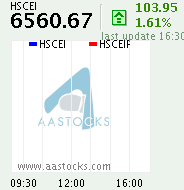Transaction Costs & the Contractual nature of the Firm
Let's take a very simple example to illustrate the concept of transaction costs.
Suppose I am working for a firm (E.g. a school) and I've run out of stationery. Surely I shall get my stationery by asking the office to get the supplies instead of going out to purchase, as my school has purchased and maintains an inventory of stationery. As a matter of course, the school (firm) will keep such supplies, without giving much concern to the cost of keeping such stationery.
For just a simple transaction, imagine that I was buying raw materials to manufacture the good and to provide my service. There is the extra effort of negotiating a price, preparing a contract, examining the products, and, potentially use the legal system to enforce the contract. So, it is better for the school(the firm) to own the supplies to avoid all the trouble.
That "trouble" is transaction costs, as Coase argued, should be added to the price of a good or service in order to measure the performance of the market operation relative to the non-market operative behaviour in firms as well as in weighing the costs and benefits of government regulation.
There are many types of transaction costs:
Search costs: buyers and sellers finding each other inside the disorganized market.
Information costs & measuring costs: for buyers, learning about the products and services of sellers and the basis for their cost, the listed price, and quality; for sellers, learning about the financial condition, and the willingness of the buyers to pay which may lead to a higher or lower setting price.
Bargaining costs: buyers and sellers setting the terms of a sale or contract for services, which might include meetings, phone calls, letters, faxes, E-mails, exchanges of data, entertainment expenses, and the legal costs of contract negotiations etc.
Policing costs: buyers and sellers taking steps to ensure that the goods and the terms of trade, which may have been ambiguous, are in fact translated into the real and fair transaction. This might include inspecting the goods and anything having to do with late delivery or payment, and etc and etc.
Enforcement costs: buyers and sellers ensuring that unsatisfied terms are remedied. This could range from mutual agreement written on a contract to the cost of litigation (making and defending claims in court).
Transaction costs range from the trivial cost to amounts greatly in excess of the transaction itself.
Coase published his findings in 1937 ---"Nature of the Firm". Ronald Coase thought they would be studied carefully. However, his fellow economists simply assume transaction costs don't exist.
Firms are created because the extra cost of organizing and maintaining them is cheaper than the transaction costs involved when individuals conduct exchange with each other using the market.
What functions should a firm perform internally? The answer is only those activities that cannot be performed more cheaply in the market or by another firm.
In fact, as Coase says, a firm will tend to expand to the point where "the costs of organizing an extra transaction within the firm becomes equal to the costs of carrying out the same transaction by means of an exchange on the open market." It the "bureaucracy" that increases as the size and complexity of the firm increases. Sometimes, bureaucracy may lead to the rise in transaction costs that far more exceed the amount of transaction costs being saved alternatively by using the market.
For some production activities, the market works quite well. However, for instance, for the large-scale operation of China Light and Power Company, which require coordination of the factor resources, organization of the firm is the only economical solution.
Should the electricity power generated by each household, what outcome would you imagine in terms of economic sense?
Copyright reserved ©











0 Comments:
發佈留言
<< Home